SpaceX Polaris Dawn astronauts make first private spacecraft into orbit (video)
Polaris Dawn just made history again.
SpaceX’s private four-star crew made its first commercial flight to Earth as it soared above Earth on Thursday (Sept. 12) on the third day of a five-day mission to Earth orbit. .
“SpaceX, we have a lot of work to do, but from here it looks like a perfect world,” Polaris Dawn director Jared Isaacman, an American billionaire who backed the project, said as he looking down while standing still. outside the Dragon’s hatch.
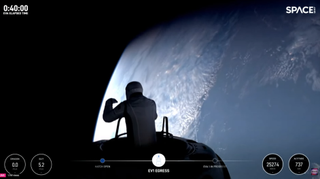
SpaceX launched four astronauts – Isaacman, pilot Scott “Kidd” Poteet” and mission specialists Sarah Gillis and Anna Menon (both of SpaceX) – into orbit on Tuesday (Sept. 10) above The Falcon 9 rocket that took off from the historic Launch Complex-39A at NASA’s Kennedy Space Center was the launch pad that hosted Apollo 11, the first mission to land humans on the moon.
Fifteen hours later, the crew made their first spacewalk history when they reached an altitude of 870 miles (1,400.7 km), more than any crewed mission since the Apollo program half a century ago. Another NASA mission, Gemini 11, previously held the altitude record for a spacecraft operating in Earth orbit at 853 miles (1,373 km).
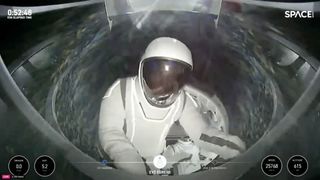
But Polaris Dawn didn’t stop there.
After reaching a record high altitude, the Crew Dragon Resilience mission’s spacecraft descended 458 miles (737 km) to its highest altitude. There, Resilience was depressed, and Isaacman and Sarah Gillis came out at the same time, Isaacman emerging at about 6:48 am EDT (1048 GMT) and Gillis following at 7:04 am EDT (1104 GMT).
The spacewalk began at 6:12 am EDT (1012 GMT), about four hours later than announced, and was expected to last about two hours. During the spacewalk, Isaacman and Gillis both checked out a series of spacesuits while SpaceX captured the incredible view of the two astronauts standing, most of their bodies outside the spacecraft.
The Dragon hatch was closed at about 7:14 am EDT (1114 GMT) as SpaceX began pressurizing the spacecraft. According to SpaceX, the entire space lasts one hour and 46 minutes, from 6:12 am EDT (1012 GMT) to 7:58 EDT (1158 GMT).
“Whew! That smell? Space,” Isaacman said after the hatch was closed and the capsule began its compression process. “Great job to everyone at SpaceX who made it possible.”
The Polaris Dawn team consists of Isaacman, who financed and directed the work; mission scholars Gillis and Menon; and pilot Poteet, a former lieutenant in the US Air Force.
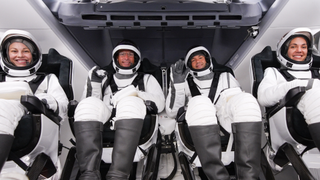
A spacewalk (also known as an extravehicular mission, or EVA), was made possible thanks to several special tools developed for the Polaris Dawn.
The crew wore new EVA suits developed by SpaceX that are designed to be light and flexible while providing protection against the harsh, unforgiving environment that orbits Earth. One SpaceX space engineer described it as “a suit of armor made of fabric.”
One of the main goals of Polaris Dawn was to test the suits, which SpaceX intends to use in various future missions around the Earth and further into space. “Let’s not lose sight of the fact that, you know, it might be 10 times from now and a series of suit changes, but that, one day, someone can wear a kind of [it] that might go to Mars,” Isaacman said on Aug. 26. “And it feels like, again, it’s a great honor to have the opportunity to test it on this flight.”
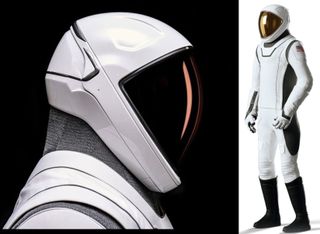
Polaris Dawn also features a heavily modified Crew Dragon spacecraft. The crew was able to exit the Resilience capsule to make their way to space thanks to a mission-specific hatch known as the “Skywalker,” which replaced the ISS’s Dragon port.
The Skywalker hatch has a ladder and handrails for the Polaris Dawn astronauts to hold onto as they walk around the outside of the Dragon capsule.
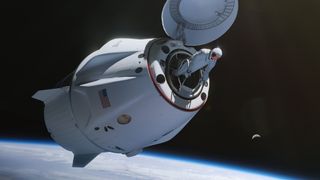
Polaris Dawn is also testing a new communication system that uses lasers to connect with SpaceX’s Starlink satellites, a megaconstellation that provides a global broadband network. The system “has the potential to open a new way of communication, not only for Dragon, but for […] Astronomers or satellites or other telescopes out there,” Isaacman said at a news conference on Aug. 19.
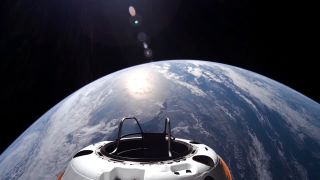
In addition to testing SpaceX’s new equipment and spacesuits, the four Polaris Dawn astronauts are conducting 36 different experiments provided by 31 separate facilities. These experiments will be conducted throughout the mission, including some that will contribute data to NASA’s Human Research Program, to help scientists better understand how the human body interacts with space.
Like the space suit tests, these experiments are intended to help advance space exploration into the future. “Each mission, whether crewed by commercial or NASA astronauts, provides a valuable opportunity to expand our knowledge of how spaceflight affects human life,” Jancy said. McPhee, NASA’s associate chief scientist for human exploration. “The information gathered from Polaris Dawn will provide us with valuable information to help NASA plan deep space missions to the moon and Mars.”
These tests range from wearable device tests that collect biometric data, motion sickness reduction tests, and eye health tests in microgravity. Polaris Dawn also traveled to parts of Earth’s Van Allen radiation belt, providing an opportunity to better understand how this radiation affects the human body.
Polaris Dawn is the second private SpaceX mission funded by Isaacman. The first, Inspiration4, launched in September 2021 and was the crew’s first non-astronomical mission. That work also flew with Resilience.
Both Inspiration4 and Polaris Dawn raised money for St. Mary’s Children’s Research Hospital. Jude is in Memphis, Tennessee. Inspiration 4 raised a total of $250 million for St. Jude.
Polaris Dawn is scheduled to return to Earth on its sixth day, landing under parachutes in one of several possible ocean landing sites off the coast of Florida. The recovery ship will retrieve the Resilience Spacecraft and crew, completing one of the most ambitious human spaceflight missions in decades.
#SpaceX #Polaris #Dawn #astronauts #private #spacecraft #orbit #video